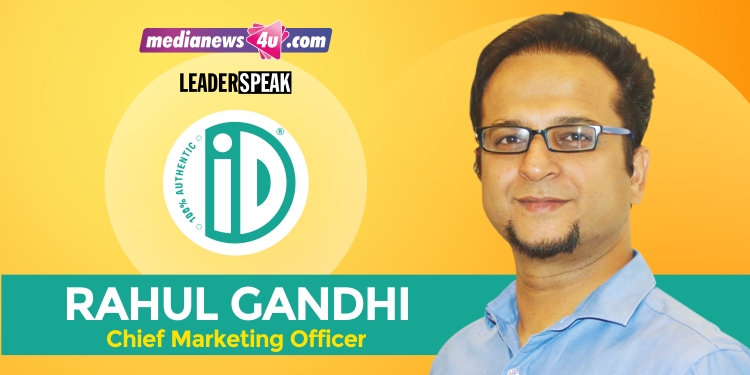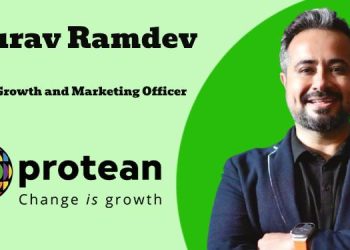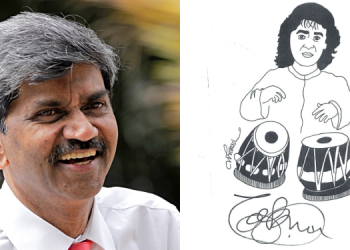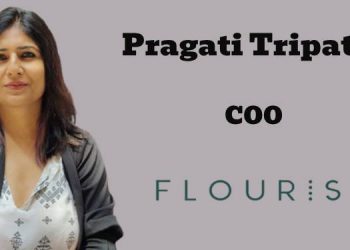Sales crossed Rs.500 crore in FY 23 (up from Rs.382 cr) as per media reports and is expected to grow to Rs.700 crore the next year. How is the portfolio bucketed as of now – fresh batter (35pc in FY22), parotta (33.5 pc in FY22) and the rest? How is each bucket growing?
The primary growth has been driven by fresh batter and that continues to be the star performer in our portfolio. It would have gone up from 35 pc to 37 pc. Parotta is more or less the same. The rest would primarily comprise of chappati, which leads the UAE business for the brand. It would contribute 10 pc to the business followed by dairy which is also close to 10 pc.
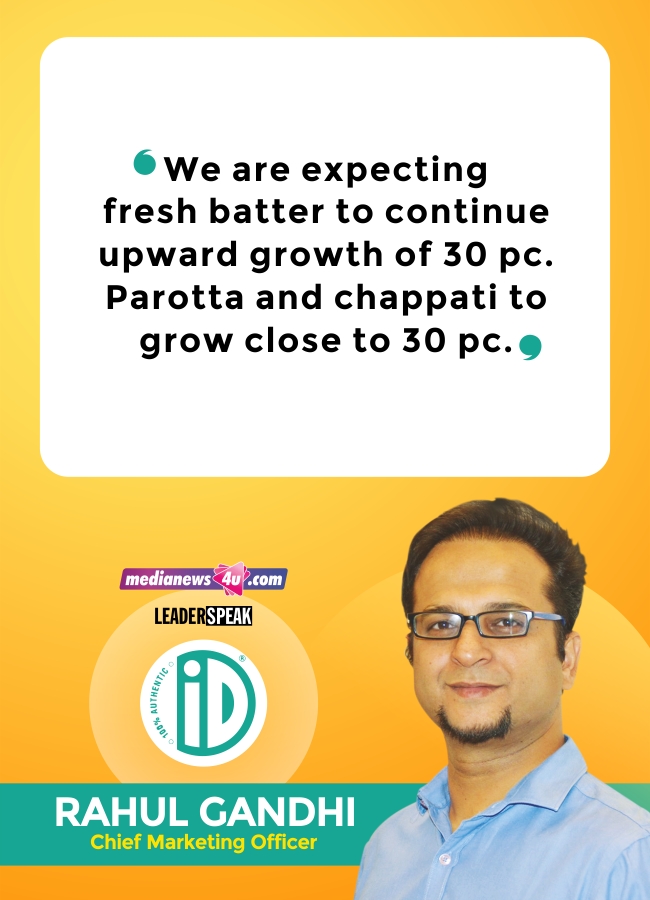
We are expecting fresh batter to continue upward growth of 30 pc. Parotta and chappati to grow close to 30 pc. We have recently launched loaf bread. We are planning to scale up in that category. Within the parotta stable, we have introduced a homestyle parotta which has a large addressable market.
The initial results to both products have been quite encouraging. We launched loaf bread only on e-commerce in Bengaluru and we have 10 pc market share on the platforms we are present in. It is a very large category, and most of the breads available in the markets today have some amount of chemicals in it. We have a differentiated product there. Hence, we have high hopes on that to scale up.
Homestyle parotta which has been launched on an all-India level is performing even better than loaf breads.
What happened to the grated coconut and tender coconut offerings?
We have discontinued those products during the pandemic and never re-introduced them. We have re-launch plans but definitely not this year. This year we are taking the approach that whatever new product development we are getting into should not only be carefully chosen but carefully invested in. It should be good for the margins our current business has.
Tender coconut is a very price-sensitive product and the supply chain is also quite complex. We may launch frozen grated coconut for international markets. Not sure when that would happen; first we need to get the Indian bread portfolio right. It may spill over to next year.
As per reports, the brand has witnessed growth of 300 pc from online channels in FY22, which came down to 100 per cent in FY23 and is stable at 30pc now. After the Covid-induced spike, do you see the offline and online sales growing at the same rate?
I think the online hypergrowth period is over. In the case of a lot of online businesses, although they have expanded very fast, there is some bit of rationalisation happening as we are witnessing the closing down of stores and moving out of Tier 2 cities.
We do see a normalisation of online and offline space. Modern trade is something which is coming up very well in the last few quarters. The general trade landscape in India is huge, so I think next year will be a mixed growth period, balanced across channels.
E-com is said to contribute 30pc of sales. Which are the products doing well online? Is this different from offline?
Fresh batter does very well and the reason is that it is a necessity item. If you don’t have a necessity item at home, consumers might not have time to step out and get it. Fresh batter tends to behave as a necessity item like milk and curd in consumer purchase behaviour. Quick commerce is such a large part of e-commerce right now.
Coffee also does very well for us. iD products don’t reach every city in the country because of our fresh distribution model. Because of its availability on e-commerce and also because it is an innovative product, as filter coffee is not easily available to people in Delhi and Mumbai, it has good traction online.
Which are the markets doing well online? Is this different from offline?
Delhi is scaling up very fast in both the offline and online space for the brand. In the online space, I don’t see much differentiation between markets. I believe, online as a space is performing equally well in all the cities we are present in. Delhi may just be an exception because the base is much smaller and it is such a large city. Otherwise, there is nothing to pick between the cities like Mumbai, Hyderabad, Bengaluru, Chennai.
The online space is vibrant and has scouted a certain percentage out of the retail share. It is here to stay and will continue to grow. It is catering to a very important consumer need of not having to travel out to purchase products, as they have the disposable income to afford the delivery fee. I don’t expect the online space to go away. The growth rates will still be higher than the overall growth rates of the FMCG category.
You launched live streaming campaign ‘TransparenSee’ (2.0) last month. How has the campaign been received?
The objective was to listen to consumer feedback and queries. Last year’s campaign was to showcase the world’s largest batter factory to people. Because no matter how much you convince people about the brand ethos and educate them of not adding preservatives to iD products, people still tend to pose questions like: ‘But you do add some bit of preservatives right?’
Last year, we took the factory live for five days, where we said let’s switch on the camera and keep it live for five days and they will get a whole idea about our production process. They have all the right to know about the food they are intaking.
We realised that it was not engaging enough as questions cannot be raised. This year we decided to open it up to consumers to ask questions. Our founder and CEO PC Musthafa and Chief Manufacturing Officer GLN Murthy were the best to address those questions.
The reception to TransparenSee was very good. We did a quirky print ad for it in all cities. The ad too received good reception. The lessons learnt was the message needs to be reiterated. For brands to enjoy consumer trusts, not only the product has to perform, but the performance should have consistency. We opened our factories to consumers. Now we have more school and college students coming in to visit, which is a fortnightly exercise.
ID is planning to ramp up the offline presence. Among the current spread of 45 cities, which geographies are you planning to expand in and which new markets will you enter?
We are planning to expand three-fold. One is that we are going deeper into our large cities, adding more outlets in Delhi, Mumbai, Bengaluru, Chennai and Hyderabad.
The second geographic expansion we are undertaking is going to be Tier 2 cities like Chandigarh, Lucknow etc. We will be taking the e-commerce route there because it is more viable for a fresh food brand like us.
Third is international markets. Though we have entered the UK and the US, more products can be introduced to enhance the market.
What are the product innovations the brand is planning in the coming days?
We are planning to launch ‘Butter Stick’ by mid-May. In June 2023, we have another launch plan – a new avatar of our coffee decoction. The existing product comes in a pouch. The new one will be in a bottle which allows the users to measure the amount of coffee you are putting in.
Then we have Vada 2.0 that will be launched in July 2023. The vada batter we have launched previously received certain feedback like there are some condiments like spices that the consumers want to add. We are giving the products some enhancements like a zipper at the back of the pouch. The spout is engineered to give more rounder and bigger vadas. We also got feedback that the users don’t have any idea on how much batter is left in the pouch. We are trying to introduce transparent pouches which can also be reused with your own vada batter.
These launches will be done in India and Dubai.
We are also trying to introduce smaller size packets because a lot of people in the North and West haven’t tried the batter yet. We are planning to launch 500gms dosa batter and parotta packets with two to three parottas in it.
In FY22, 71pc of sales was from India. What is the current share of international sales? Is the Middle East the largest contributor?
The numbers remain the same.
iD entered the UK market this fiscal. How has the initial response been? What are your expansion plans in other international markets?
The initial market response has been good. Much to gain from those markets. We are yet to put any marketing monies behind it because the first thing you do when you enter a new market is to study the market. We have finished doing that, rest will be decided later.
What are the other campaigns in the pipeline for the brand?
We have a Mother’s Day campaign coming for Q1. The new product launches I mentioned earlier, there will be campaigns surrounding them as well. There is another major campaign in the pipeline focused on war on preservatives which will go live in Q2.
We are also trying to do a complete portfolio change over. We are planning to associate with the top chefs in India for the parotta portfolio in the North and West.
We are also trying to see how we can bring our brand alive on company-owned vans. We are trying to go the illustration/cartoon route and trying to make characters out of vadas, idlis etc. It will not be like the Amul girl or Air India Maharaja. All our products will also don some character and they will have some cute and interesting conversation on the van.
Of total media spends, 70 to 80 pc will be skewed towards digital – 30 to 40 pc will go towards YouTube, 20 to 30 pc towards OTT and 10 to 15 for influencer marketing activities.
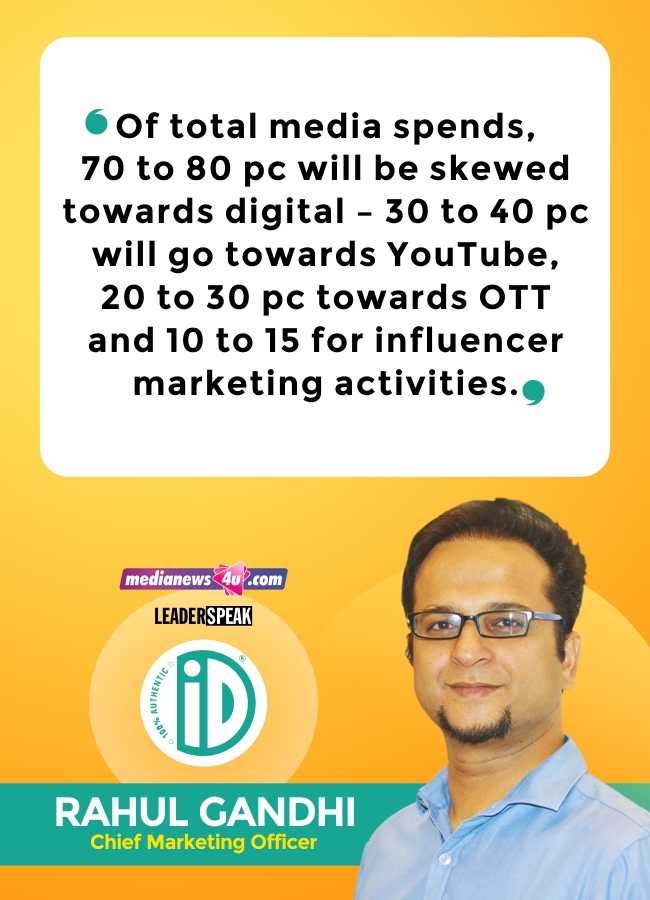
Rest 20 to 30 pc will be on the television and the vans mentioned earlier. In the UAE, radio as a medium works well for the brand.
(First published by The Free Press Journal BrandSutra. Content powered by MediaNews4u.com. Feedback: [email protected])

